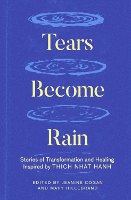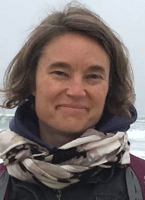
Image by Gerd Altmann
Growing up, i learned to be a staunch individualist and took pride in being self-sufficient. I was so caught up in “doing it myself,” so convinced independence was strength, that I was blind to the direction I was heading in: a narrow, rigid life of being attached to my way of doing things, an isolated life closed off from true connection.
Thích Nh?t H?nh (Th?y) helped me to make a course correction with his teachings about Sangha—a Sanskrit word that means group, congregation, or community. Th?y taught me that we’re all stronger when we join our energies and don’t have to carry things on our own.
But I didn’t grasp that right away. My first taste of Sangha was in 2001, at a retreat in San Diego. I say “taste” because during those five days, I barely opened myself up to the other people who had gathered there. I moved around the retreat like a solitary satellite, staying mostly silent and not engaging with others. Though people were all around me, I was quite alone there.
The Painful Recognition
Listening to Th?y’s talks was deeply moving, and I cried with the painful recognition that my lifestyle—the constant busyness, the stress of trying to reach an unreachable standard of perfection, the lack of inner peace—was causing me a lot of unhappiness. I kept my feelings to myself, which was typical for me at that time.
However, in an LGBTQ dharma discussion group, I had an introduction to the gift of Sangha. A dharma discussion group is a small group of people who meet each day to share thoughts and feelings about our practice. I felt the warm welcome and kinship of the group, even as I remained shy and guarded. I didn’t speak much, except for my nervous presentation of a poem on the last day.
Still, as others shared openly, their insights helped me understand and deepen my own spiritual journey. I discovered what a rare, valuable gift it was to speak honestly and to connect vulnerably with people in a circle of trust held by wise and kind-hearted facilitators. This was the beginning of my trying to heal the relative isolation that had been my normal. In this isolation, I had denied myself the warmth and messiness and joy and learning that comes from raw, real human connection.
A Drop in the River
Th?y likens Sangha to a river. Each person is a drop in the current. Alone, we don’t get very far, but combined, we’re able to reach the ocean. After that retreat, I worked at integrating Th?y’s teachings into my life to shift my energy beyond my own little dramas to a bigger cause; the Sangha is a larger organism of which I have, since my first retreat, become a humble but necessary part.
A group called the Heart Sangha, which meets regularly near my home, provides powerful medicine that brings me peace. It is one of hundreds of such groups meditating in Th?y’s tradition all over the world. We meet once a week in the beautiful Santa Cruz Zen Center. Usually there are fifteen or twenty of us.
I love this Monday night practice, which starts with a large bell sounding three times to invite us into silent meditation while we sit in a circle, facing the center. It’s a chance for each of us to meditate within the profoundly concentrated energy of collective focus, which is an energy much more potent than when I meditate alone.
Solo practice can be wonderful, but sometimes I am easily distracted by what’s happening in my environment or preoccupied with the noise of my thoughts. When I meditate with a group, the silent stillness resounds, the peaceful energy is magnified, and I find it easier to focus and rest deeply in meditation.
Sharing and Connecting with Others
For me, the sharing and connecting with others in our Sangha gatherings is a continuation of the wonderful freedom I found on retreat. Here, I share my suffering and hold that of others. We talk about the teachings, our own struggles and joys, and about whatever comes up for us as we try to practice mindfulness in our daily lives.
These discussions give me a chance to speak from the heart and to practice the art of deep listening—listening without judging or interrupting, trying not to allow my own thoughts to take my attention away from the speaker. It’s a time to connect with other human beings, a time to know we are not alone. And because we are there to actively study and practice compassion and kindness, our gatherings tend to bring out the best in us: they are shaped by gentleness and respect for each other.
Those Monday Sangha evenings are the grounding point, but I know now that Sangha is much more than just a bunch of like-minded meditators gathering each week. Sangha is an extended body, an ecosystem of interconnected beings, a “loving and supportive community of practice,” as Th?y says.
Like the cells of a human body, we are all separate individuals that contribute to the functioning of the whole. We’re unique, with our own stories and opinions, but we practice mindfulness as one body.
The presence of our “one body” can be felt when we sit together in meditation and a clear, deep stillness fills the hall. Our diversity makes us strong and resilient as we weave different perspectives together.
Sharing Grief and Love
When my aunt Helen, one of my mother’s triplet sisters, died suddenly of a heart attack, I brought my suffering to the Sangha. I was heartbroken. She was like another mom to me, and I loved her deeply. Since Helen lived in another state, I was not able to see her.
The day I heard the terrible news, I told the story through tears and asked the community to sing “You Are My Sunshine.” This was a song my grandmother sang to show how dearly she loved her children and grandchildren.
My Sangha friends did not know my aunt, but they loved her because I did. As we sang together, I felt my love magnified and strengthened by their love. Though we sang to my aunt, I felt the group was also singing to console me.
A Handful of Salt
In his book The Heart of the Buddha’s Teaching, Th?y says, “If you take a handful of salt and pour it into a small bowl of water, the water in the bowl will be too salty to drink. But if you pour the same amount of salt into a large river, people will still be able to drink the river’s water.
The salt is like the suffering in each of our individual lives. Hearing the singing voices of our one Sangha body, I felt held, comforted, relieved. The embrace of a loving community is a balm that has healed my tendency to struggle with difficult emotions alone.
Copyright 2023. All Rights Reserved.
Adapted with permission.
Article Source:
BOOK: Tears Become Rain
Tears Become Rain: Stories of Transformation and Healing Inspired by Thich Nhat Hanh
edited by Jeanine Cogan and Mary Hillebrand. 32 mindfulness practitioners around the world reflect on encountering the extraordinary teachings of Zen master Thich Nhat Hanh, who passed away in January 2022, exploring themes of coming home to ourselves, healing from grief and loss, facing fear, and building community and belonging.
32 mindfulness practitioners around the world reflect on encountering the extraordinary teachings of Zen master Thich Nhat Hanh, who passed away in January 2022, exploring themes of coming home to ourselves, healing from grief and loss, facing fear, and building community and belonging.
The stories encapsulate the benefits of mindfulness practice through the experiences of ordinary people from 16 countries around the world. Some of the contributors were direct students of Thich Nhat Hanh for decades and are meditation teachers in their own right, while others are relatively new on the path.
Tears Become Rain shows again and again how people are able to find refuge from the storm in their lives and open their hearts to joy. Through sharing their stories, Tears Become Rain is both a celebration of Thich Nhat Hanh and a testament to his lasting impact on the lives of people from many walks of life.
For more info and/or to order this book, click here. Also available as a Kindle edition.
About the Author
 Natascha Bruckner lives near the Pacific Ocean in the United States with her partner, Zachiah Murray, and their four cats. She is a member of the Heart Sangha in Santa Cruz, California. In 2011, Natascha was ordained into the Order of Interbeing and received the name True Ocean of Jewels. She completed a chaplaincy training program with Roshi Joan Halifax at Upaya Zen Center in 2020 and a year later received the Lamp Transmission to become a dharma teacher in the lineage of Thích Nh?t H?nh. She works as an editor and finds joy in caring for aging loved ones, volunteering with hospice patients, supporting Buddhist and restorative justice programs in prisons, and crocheting.
Natascha Bruckner lives near the Pacific Ocean in the United States with her partner, Zachiah Murray, and their four cats. She is a member of the Heart Sangha in Santa Cruz, California. In 2011, Natascha was ordained into the Order of Interbeing and received the name True Ocean of Jewels. She completed a chaplaincy training program with Roshi Joan Halifax at Upaya Zen Center in 2020 and a year later received the Lamp Transmission to become a dharma teacher in the lineage of Thích Nh?t H?nh. She works as an editor and finds joy in caring for aging loved ones, volunteering with hospice patients, supporting Buddhist and restorative justice programs in prisons, and crocheting.






















